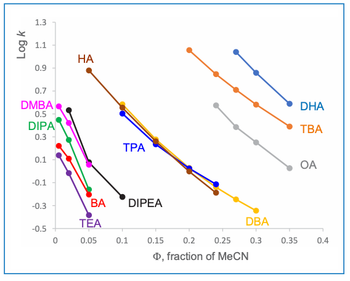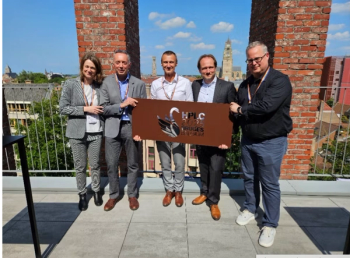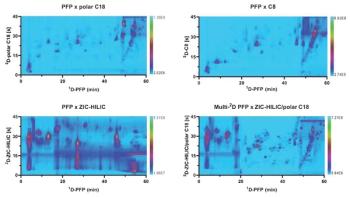
- HPLC 2025 Companion: Hot Topics in (U)HPLC
- Pages: 9–10
HPLC 2025 Preview: The Present and Future of Automation in Analytical Laboratories
Kerstin Thurow, who achieved first professorship in “Laboratory Automation” at the Faculty of Engineering at the University of Rostock, in Germany, offers insights into the constantly-evolving field of laboratory automation.
Analytical laboratories are undergoing a fundamental transformation. In the face of increasing sample volumes, growing regulatory requirements, and the rising demand for faster, more precise, and cost-efficient analysis, optimizing laboratory processes is becoming a central focus. Automation technologies offer promising solutions in this regard. Recently, they have evolved from isolated solutions to comprehensive systems that permeate nearly all areas of laboratory practice. This development not only opens up new opportunities in terms of efficiency, data quality, and scalability but also brings technical, organizational, and personnel challenges. To successfully address these, strategic approaches are needed that consider both the technological and human dimensions of the transformation.
The automation of analytical laboratories is not a mere trend but a strategic response to the increasing demands across various industries, from pharmaceutical research to environmental analysis, and food and drug control. In these fields, rising sample volumes and stricter regulations are putting immense pressure on laboratories. In addition, there are higher requirements for data quality and reproducibility, especially in highly regulated environments such as good laboratory practice (GLP) or good manufacturing practice (GMP) analytics, where standardized and traceable processes are indispensable.
An additional factor driving automation is the shortage of qualified personnel. In a time when skilled labor is difficult to find, laboratories need to use their resources more efficiently to ensure the quality of their work while also reducing costs. Automation is the key technology here: It boosts efficiency, improves data integrity, and relieves staff from repetitive tasks.
Modern robots perform tasks such as moving sample containers, opening and closing lids, or loading analytical instruments. Automated pipetting systems, which operate with high speed and precision, are especially powerful. They enable precise dosing of even the smallest volumes, all reproducible, contamination-free, and highly repeatable. These systems handle complex sample preparation processes such as dilution, mixing, or incubation. In addition, image processing systems can detect errors in microplates or identify color changes (1).
An innovative step in laboratory automation is the modularity of many current systems. Modular liquid-handling platforms can be equipped with various functions such as heating, shaking, or centrifugation. This flexibility allows laboratories to gradually integrate automation and expand existing systems without rebuilding the entire infrastructure.
The true transformation occurs when automation moves beyond individual tasks and becomes a holistic concept. End-to-end automated workflows, from sample registration to robot-assisted preparation, analysis, and artificial intelligence (AI)-supported evaluation, create a seamless, error-free, and highly reproducible process chain. This increases efficiency, enhances data quality, and relieves professionals from repetitive tasks, allowing them to focus on value-added activities.
Alongside mechanical automation, digitalization in laboratories continues to advance. Devices are increasingly communicating using standardized interfaces, enabling integration into central laboratory information management systems (LIMS) or manufacturing execution systems (MES), allowing consistent data capture and analysis for quality assurance and regulatory compliance.
Another key milestone is increasing connectivity through the Internet of Things (IoT) (2). Sensors provide real-time data on temperatures, fill levels, error states, and energy consumption. This data can optimize processes, plan maintenance (predictive maintenance), and manage resources more efficiently. Combined with cloud technologies and machine learning, new potentials emerge, such as cross-site networking and large data analysis for pattern recognition.
Implementation Challenges
Despite the benefits, introducing automation in laboratories is not straightforward. Several key challenges must be addressed strategically.
Technical complexity is one major hurdle. Many laboratories use a mix of outdated devices from different manufacturers, often with incompatible interfaces. Successfully integrating new systems requires thoughtful planning, including system architecture and process analysis, to avoid inefficiency or disruptions.
Another challenge is the investment cost. High-quality automation requires significant initial investment, which is especially difficult for smaller laboratories. The economic benefits typically become evident only in the medium to long term, so a solid cost-benefit analysis is crucial. Financial support through grants, leasing, or partnerships can help ease the burden.
Employee involvement and organizational change are also vital. Automation changes the way work is done, eliminating routine tasks and shifting roles. Employees need digital skills and an understanding of new workflows. Training and change management strategies are essential to ensure the successful integration of new systems.
Finally, regulatory and safety considerations must be met. Automated systems in highly regulated environments require validation and compliance with standards like 21 CFR Part 11 or ISO 17025. IT security and data protection are also increasingly important with digital and cloud-based systems.
Implementation Strategies
The introduction of automation in laboratories doesn’t require a complete overhaul. A gradual approach has proven most successful. Many laboratories start by automating repetitive tasks, such as using automated pipetting stations for sample preparation. This ensures that existing processes remain stable while employees adapt to new technologies. Pilot projects or lighthouse processes allow for small-scale testing, building acceptance before full implementation.
A key element of successful automation is selecting modular, scalable systems. These systems allow for gradual expansion and flexibility in adapting to growing needs. It’s essential that the technologies used have open interfaces, are cross-compatible, and can be developed long-term. A clear roadmap from providers ensures future-proof technology.
Collaboration among interdisciplinary teams is also crucial. Automation impacts all aspects of a laboratory, so integrating technical systems into daily operations requires cooperation between laboratory staff, IT, engineering, project management, and quality assurance.
Data management is another vital factor. Automation generates vast amounts of data. A solid plan for storing, analyzing, and utilizing this data is crucial for further digitalization and AI implementation. Efficient data management enables laboratories to leverage new opportunities such as big data analytics and predictive maintenance.
The Future
The automation of analytical laboratories is at the beginning of a long-term development, with the coming years being critical for its potential. Five key trends will shape the future laboratory.
AI is increasingly used for real-time adjustments of laboratory processes, optimizing parameters, reducing errors, and improving reproducibility. AI integration could elevate automation, making processes faster and more precise (3).
The use of assistance systems and augmented reality (AR) is on the rise, enhancing human-machine collaboration. Machines can handle routine tasks, while humans stay focused on the complex decisions. AR solutions can provide real-time visual guidance, improving work efficiency and reducing errors.
Fully autonomous laboratories, where processes from sample intake to result transmission are automated, are becoming more feasible. These interconnected systems would operate without human intervention, reshaping human roles and eliminating many routine tasks, though presenting new challenges in oversight and safety.
Sustainability in laboratory automation is gaining in importance due to environmental pressures. Automation systems are resource-efficient, and future processes could minimize consumption while offering innovative material recovery and reuse solutions, reducing ecological footprints and costs (4).
The democratization of automation, driven by open-source solutions, standardization, and decreasing costs, is making advanced automation accessible to smaller laboratories. This shift allows them to enhance efficiency without the need for significant investment.
References
(1) Gautam, A.; Sharma, V. IoT and Its Future Prospects: A Case Study on Smart Labs. CSIM 2022, 4, 20–23. DOI:
(2) Khan, S. U., Møller, V. K., Frandsen, R. J. N. et al. Real-time AI-driven Quality Control for Laboratory Automation: A Novel Computer Vision Solution for the Opentrons OT-2 Liquid Handling Robot. Appl. Intell.2025, 55, 524. DOI: 10.1007/s10489-025-06334-3
(3) Thurow, K. Strategies for Automating Analytical and Bioanalytical Laboratories. Anal. Bioanal. Chem. 2023, 415, 5057–5066. DOI: 10.1007/s00216-023-04727-2
(4) Đorđević, M.; Životić, M.; Radojević Škodrić, S.; et al. Effects of Automation on Sustainability of Immunohistochemistry Laboratory. Healthcare 2021, 9, 866. DOI: 10.3390/healthcare9070866
Kerstin Thurow studied chemistry and received her doctorate from the Ludwig Maximilian University of Munich, Germany, in 1995. In 1999, she habilitated in measurement and control engineering. In the same year, she was appointed to the first professorship of “Laboratory Automation” in the world at the Faculty of Engineering at the University of Rostock, Germany. She has held the chair of Automation Technology/Life Science Automation at the University of Rostock since 2004 and is director of the Center for Life Science Automation (University of Rostock). Her research topics include the automation of life science processes, robotics, and mobile robotics, as well as system integration and systems engineering. Thurow has published more than 250 journal and conference papers as well as three monographs.
Articles in this issue
8 months ago
HPLC 2025 Preview: HPLC 2025 Hits BrugesNewsletter
Join the global community of analytical scientists who trust LCGC for insights on the latest techniques, trends, and expert solutions in chromatography.




